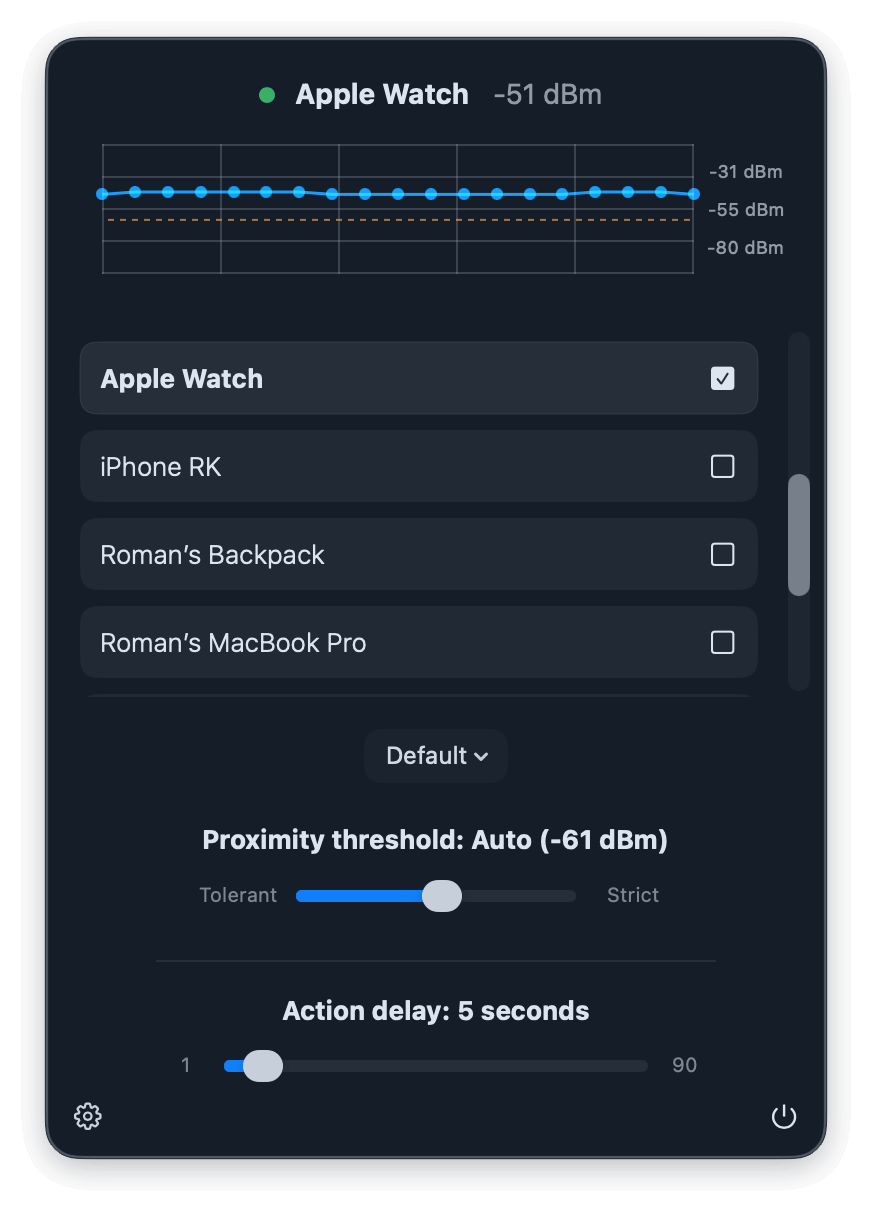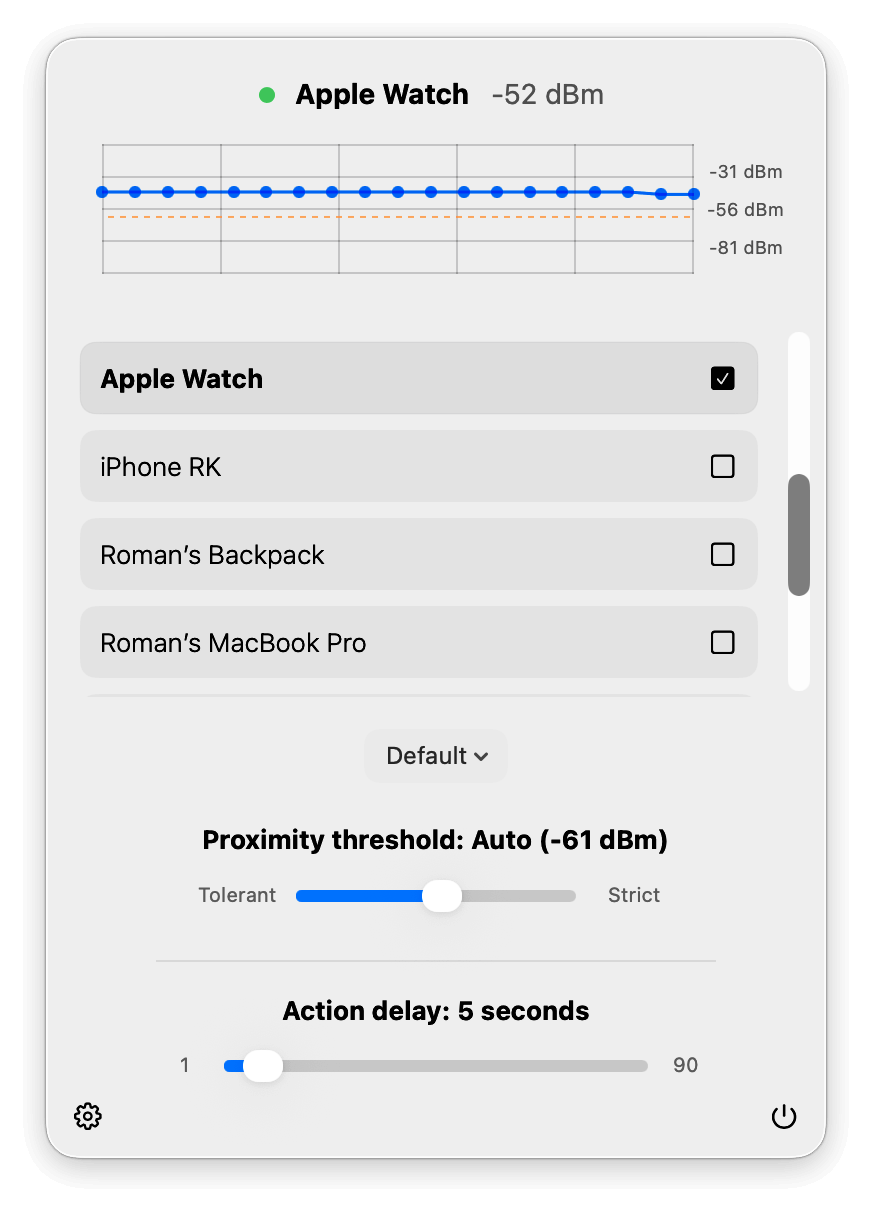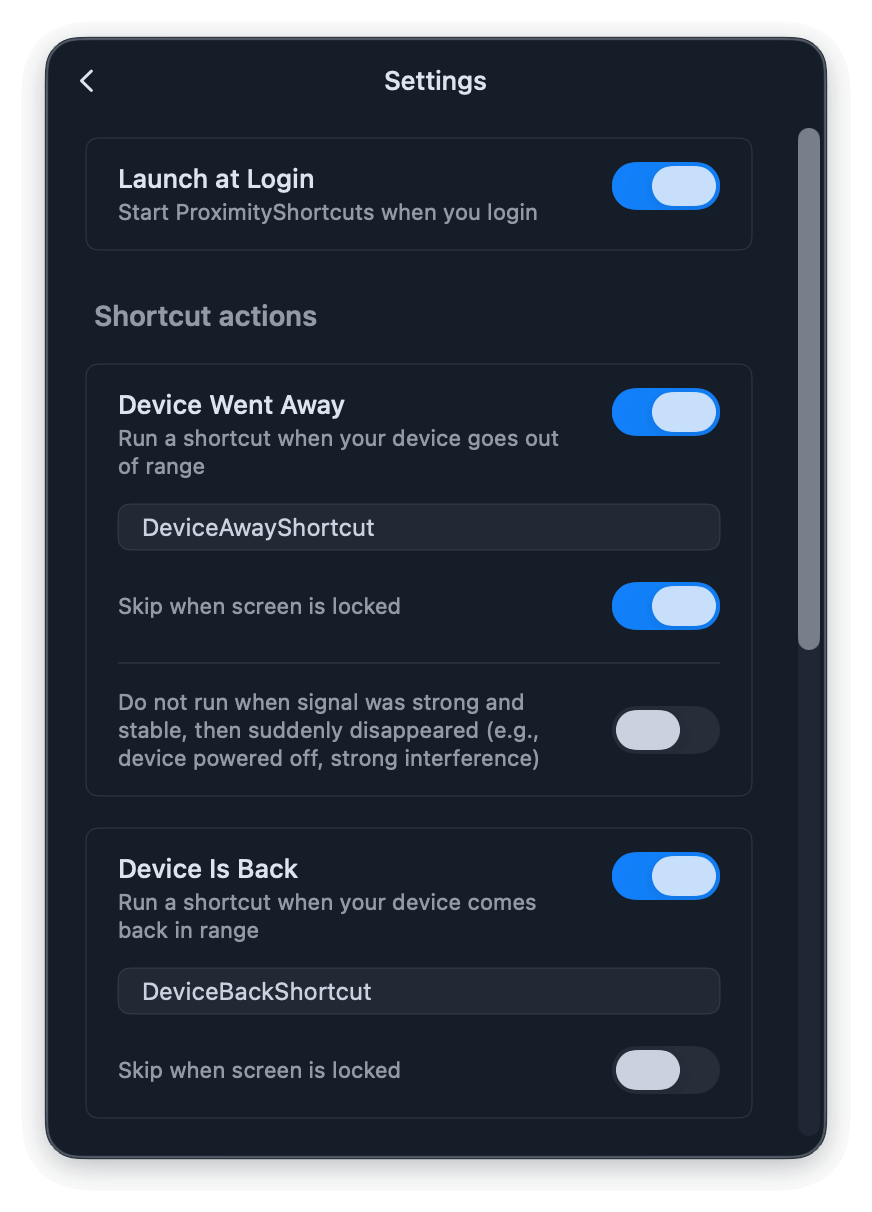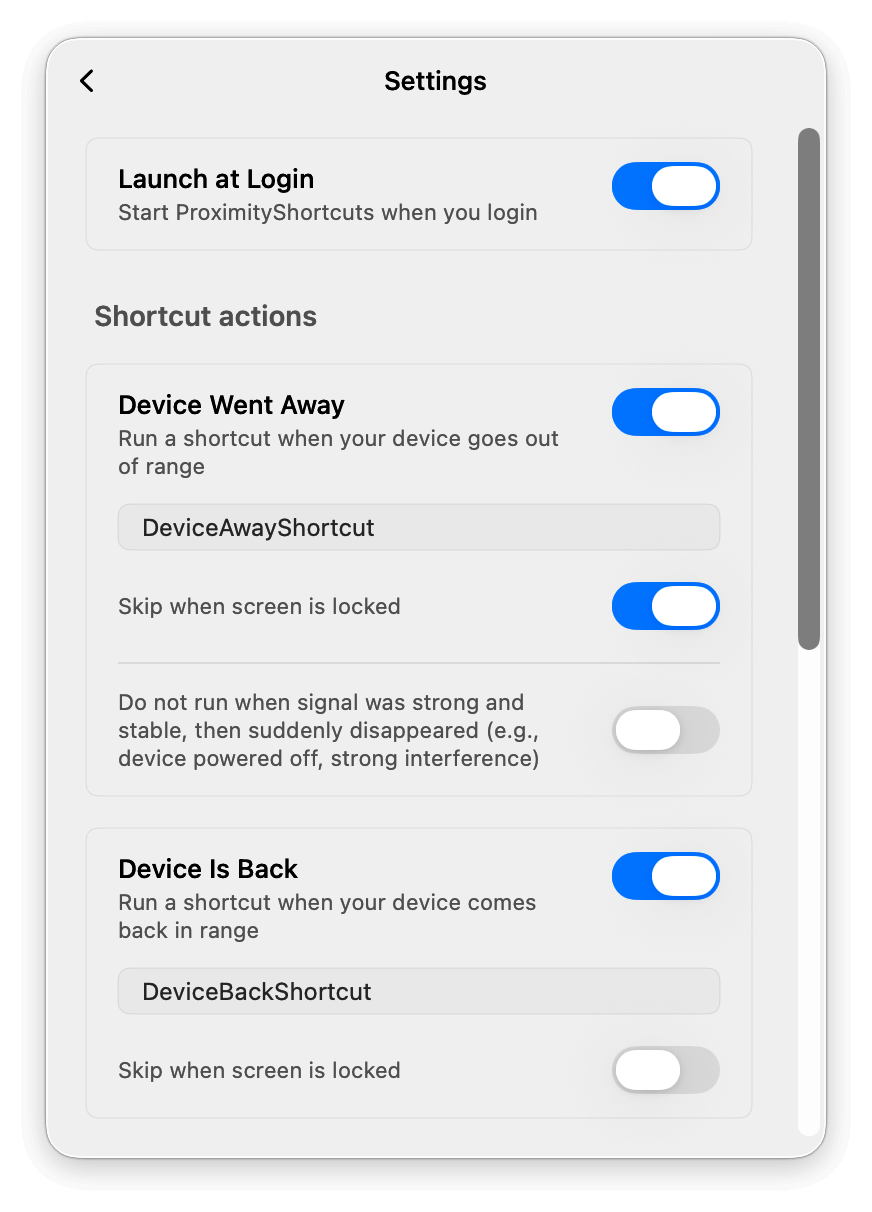Proximity Shortcuts
Run shortcuts when you leave or return to your Mac. Automatically.
Monitors your iPhone or Apple Watch via Bluetooth LE




Menu Bar App • macOS 14 or later
Want to try before buying? Check out ProximityLock.app
How It Works
ProximityShortcuts monitors your iPhone or Apple Watch over Bluetooth LE and uses signal processing to track your proximity reliably. The same mathematics that guided Apollo missions.
Configure sensitivity, action delay, and shortcuts to run. When you leave or return, your shortcuts trigger automatically.
Screen Lock
Lock instantly when you step away
Media Control
Pause music and media playback
Display Control
Start screensaver or adjust brightness
Smart Home
Trigger HomeKit scenes automatically
Custom Workflows
Build and chain multiple actions together
Notifications
Send alerts when you leave or return
Behind the Math
How ProximityShortcuts ensures accurate detection
The Problem
Wireless signals are inherently unstable. Your device might measure -65 dBm, then suddenly drop to -90 dBm, then bounce back, all while you're sitting still. Environmental factors create constant noise.
Why Simple Averaging Fails
Basic approaches weight every reading equally, making them unable to distinguish random interference from genuine distance changes as you walk away.
The Solution: Signal Processing
ProximityShortcuts uses a prediction model that estimates both your current signal strength and how it's changing over time. Each new signal measurement is weighted against this prediction: measurements that align with the expected trend are trusted more, while unexpected spikes are automatically dampened. This allows the filter to follow genuine movement smoothly while filtering out random interference.
This filtering technique was developed by Rudolf E. Kálmán in 1960 and became crucial for the Apollo program's navigation systems, where reliable decisions from uncertain sensor readings were critical. The same Kalman filter mathematics now powers smartphone GPS, autonomous vehicles, and financial forecasting.
The algorithm's computational efficiency made it practical for the Apollo program despite the limited computing power of the 1960s. That same efficiency remains its strength today: ProximityShortcuts performs these calculations continuously in the background using negligible CPU and energy resources, making proximity detection practical and reliable.
FAQ
Everything you need to know about ProximityShortcuts
Complete Guide
Check out the complete user guide for setup instructions, troubleshooting tips, advanced features, and everything else you need to know.
Read the Complete Guide